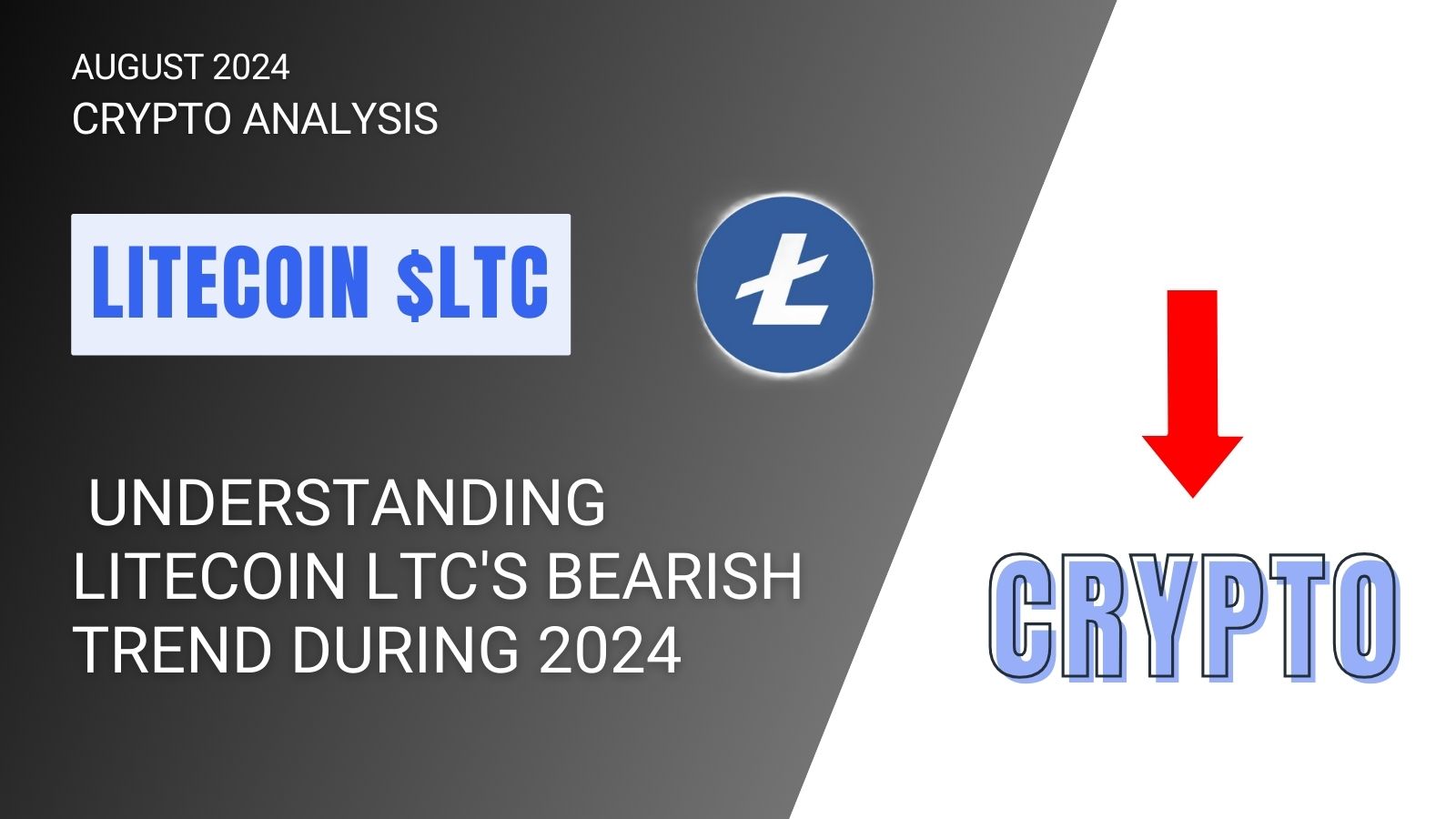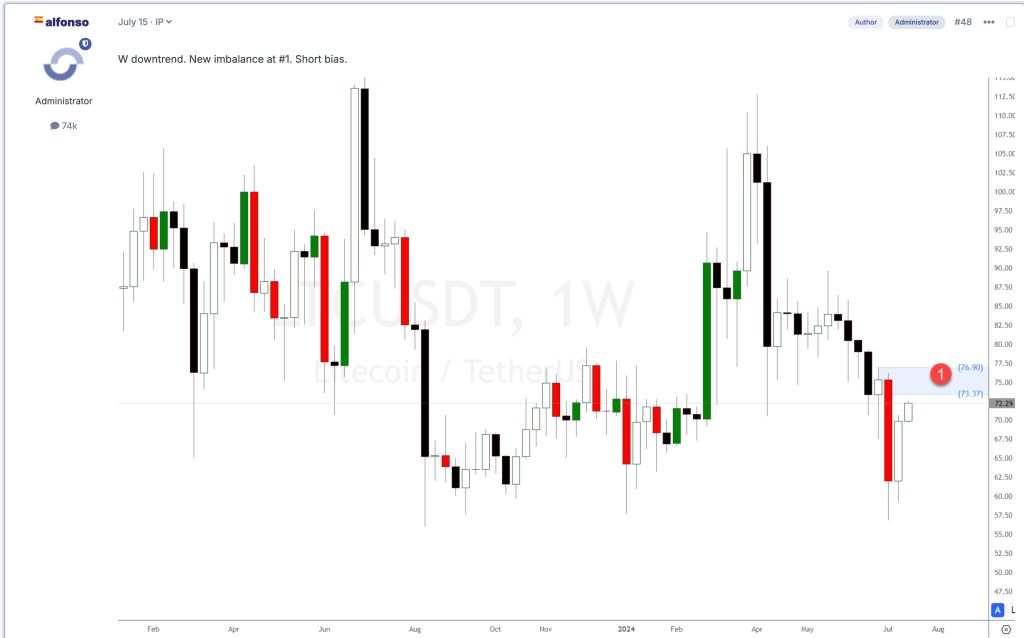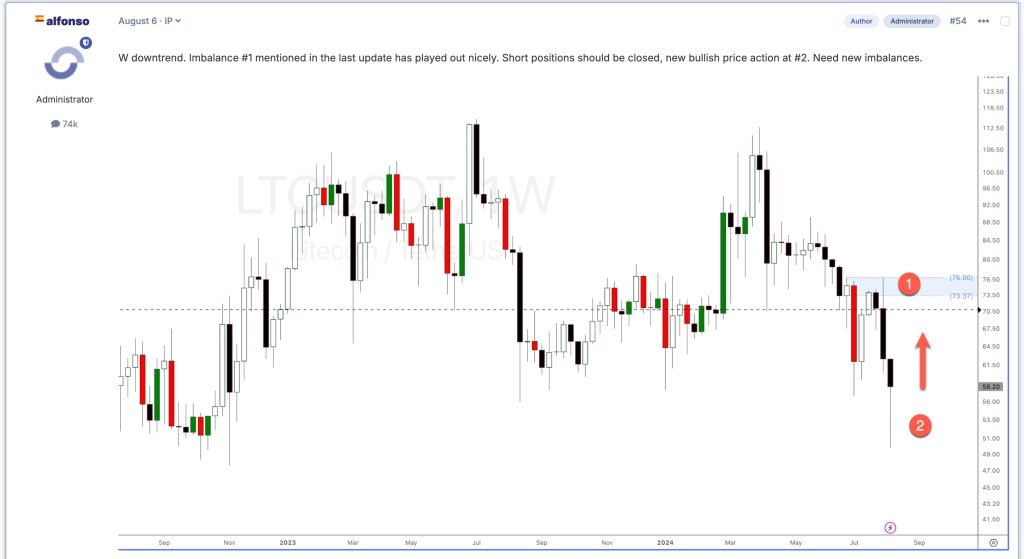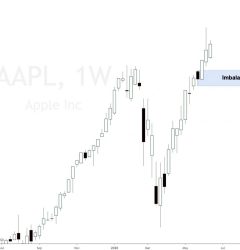06 Aug

As the cryptocurrency landscape continues to evolve, 2024 has presented unique challenges and opportunities for investors and enthusiasts alike. Among the myriad digital currencies vying for attention, Litecoin (LTC) stands at a crossroads, grappling with a bearish trend in the weekly timeframe that has left many scratching their heads. In this supply and demand cryptocurrency analysis, “Navigating the Downturn: Understanding Litecoin LTC’s Bearish Trend in 2024,” I will dive into the factors contributing to Litecoin’s current bearish trajectory and how supply and demand imbalances are the forces that move the crypto markets too.
Introduction to Litecoin LTC and its current state in the market
Litecoin (LTC) has long been a cornerstone of the cryptocurrency market and is known for its speed and efficiency. However, as we enter 2024, many investors face a stark reality: LTC is experiencing a bearish trend that has left many questioning its future. The excitement surrounding this digital currency seems to have dimmed, leaving enthusiasts and holders alike uncertain about their investments.
In such a volatile landscape, it’s crucial to understand what contributes to these downturns and how they impact Litecoin specifically. With social media buzzing over price predictions and market analysis shifting daily, navigating this turbulent phase requires insight and strategy. Let’s dive into the current state of Litecoin LTC in 2024 to uncover why it finds itself on shaky ground today—and explore ways you can adapt your investment approach amidst these challenges.
Understanding bearish trends in cryptocurrency and its impact on Litecoin LTC
Bearish trends in cryptocurrency can be unsettling for investors. They often signal a decline in prices, leaving many to wonder about the future of their assets. For Litecoin (LTC), this downward momentum has raised eyebrows.
When the market is bearish, sentiment shifts quickly. Fear and uncertainty dominate trading decisions, leading traders to offload their holdings. This ripple effect can significantly impact LTC’s value, as it relies heavily on community trust and investor confidence. The broader market dynamics also play a role. Economic factors such as inflation rates or regulatory changes contribute to these trends and affect various cryptocurrencies differently.
LTC’s perceived utility in transactions makes its performance particularly sensitive during downturns. As other coins fluctuate wildly, users may gravitate toward stability elsewhere—putting additional pressure on Litecoin’s price trajectory amidst prevailing negativity in the crypto landscape.
However, as shown in the weekly supply and demand analysis for LTC below, we anticipated Litecoin LTC to reach the weekly supply level at #1. With its help, it would continue its downward bearish trend. This crypto analysis was shared last July 15th 2024.

On August 6th, 2024, the weekly supply and demand analysis for LTC was updated. As you can see, the imbalance has been successful. The bullish arrow indicates that we can anticipate a new upward trend on LTF after such a significant decline. This exemplifies effective supply and demand crypto trading.

Strategies for navigating the downturn and minimizing losses for Litecoin LTC holders
Litecoin holders might explore several alternatives to safeguard their investments during this bearish trend. Bitcoin Cash (BCH) is one option that provides similar transaction speeds and lower fees while maintaining a solid market presence. However, it would be best to always do a top-down supply and demand of every crypto you intend to trade.
Another choice could be Cardano (ADA). Known for its strong focus on sustainability and scalability, it has attracted attention during downturns. Its community-driven approach can provide a sense of stability. For those interested in decentralized finance, Chainlink (LINK) offers unique value as an oracle network connecting smart contracts with real-world data. This integration enhances functionality in various applications.
Lastly, Stellar Lumens (XLM) focuses on cross-border transactions and financial inclusion, offering potential growth opportunities even in challenging markets. Diversifying into these alternatives may help mitigate risks associated with holding Litecoin LTC alone during this difficult phase.








